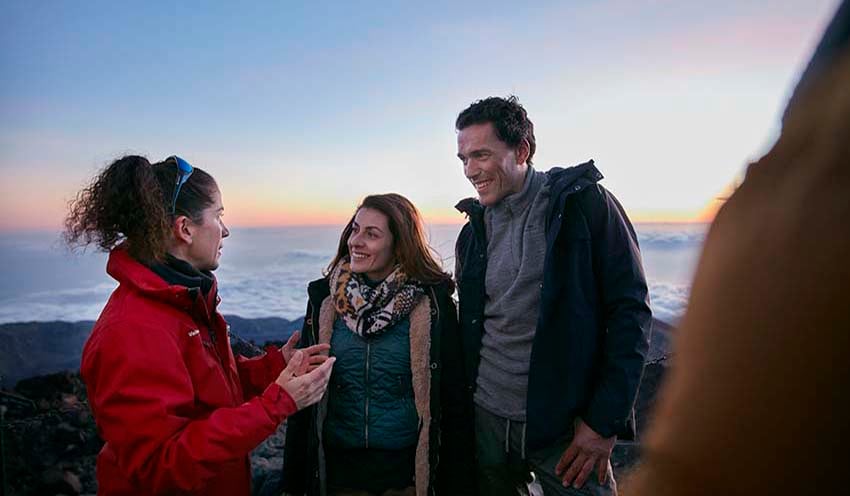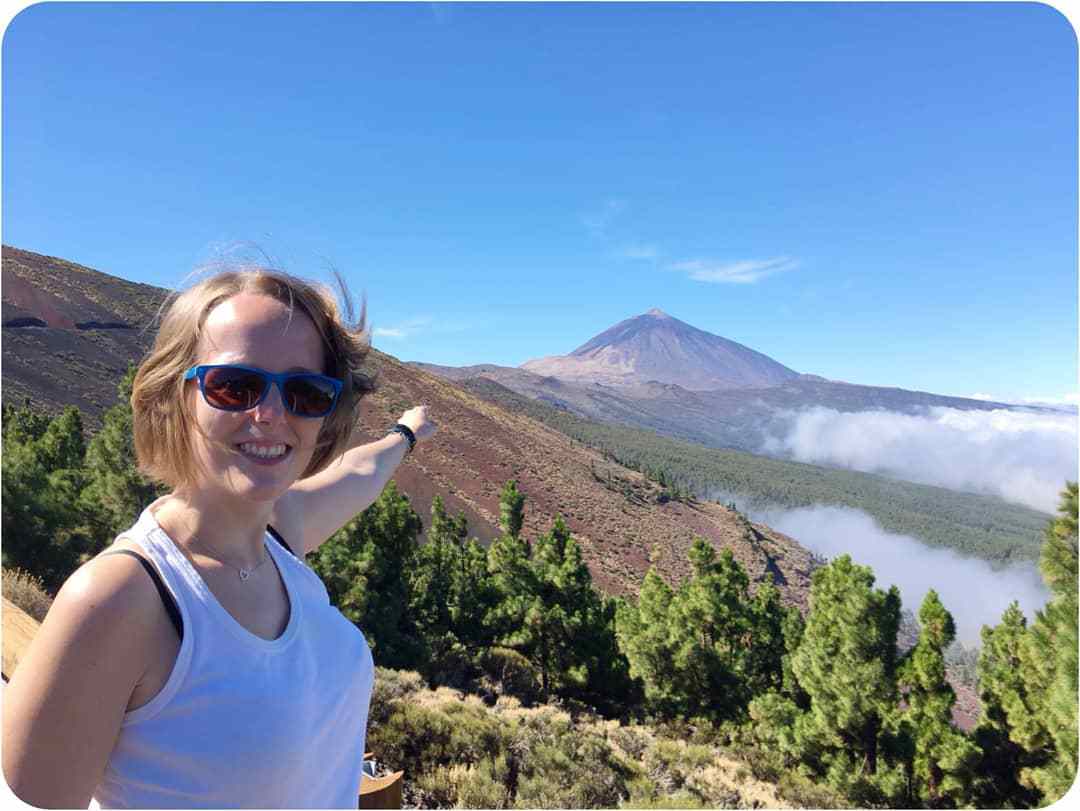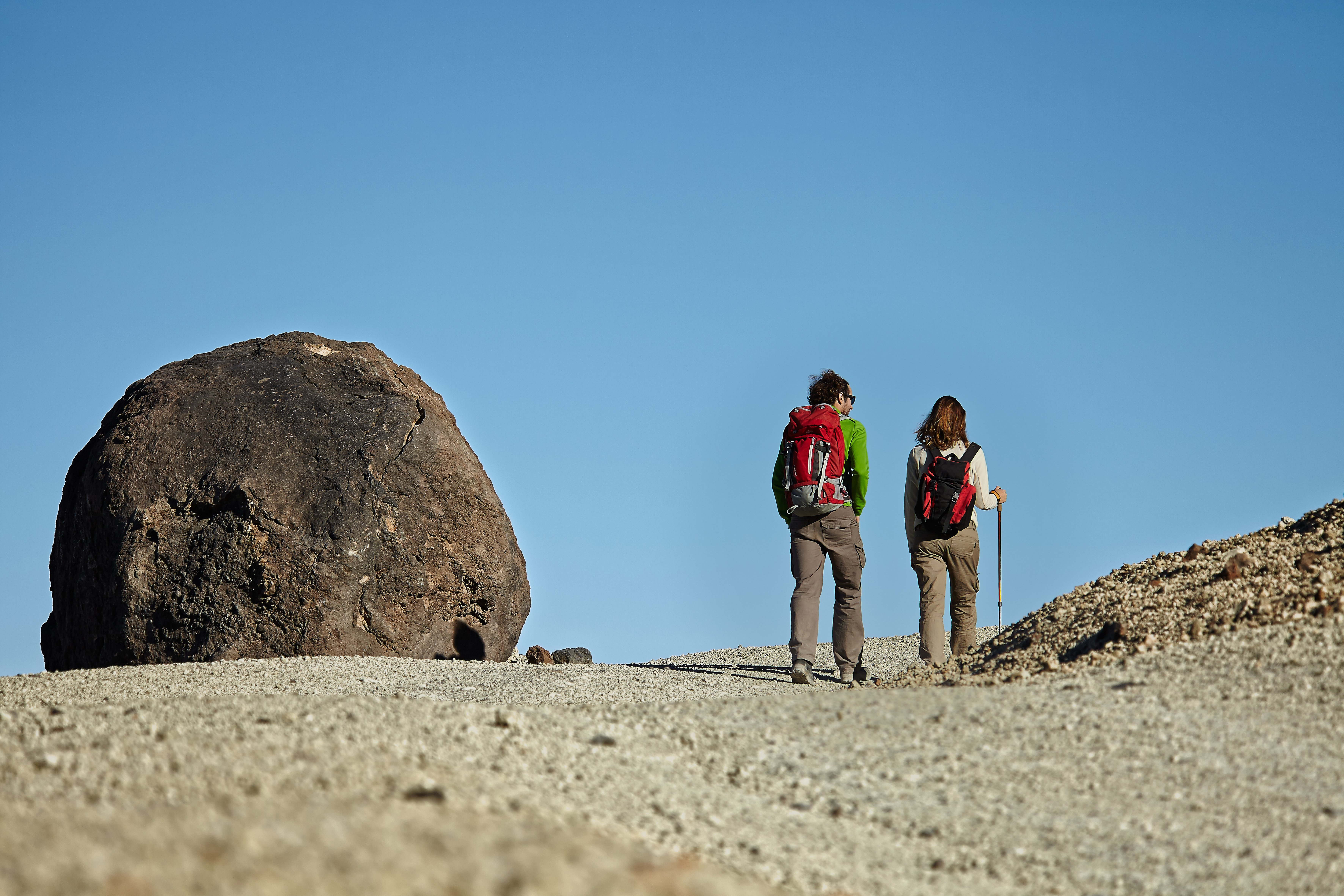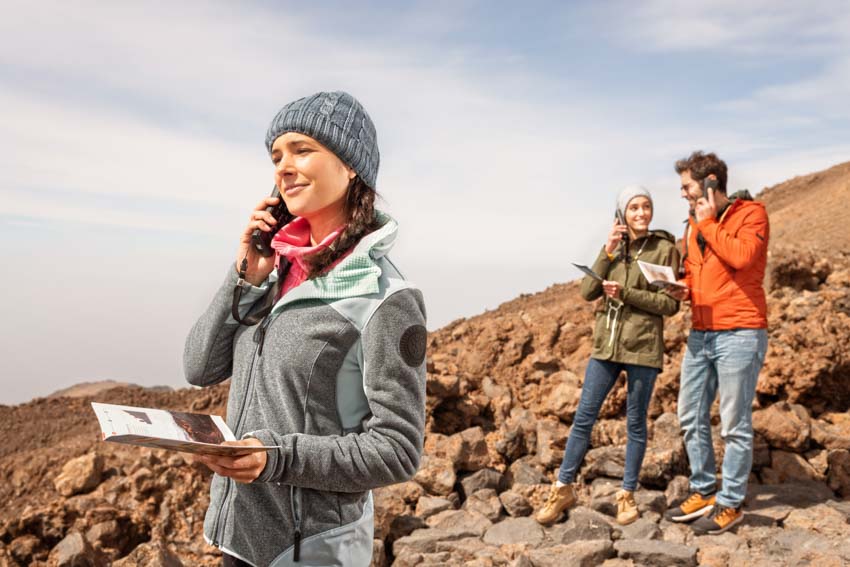Climbing Mount Teide by car is an unforgettable experience that allows you to explore one of the most amazing landscapes on the planet at your own pace.
This active volcano rises some 3,715 metres above sea level and is the highest peak in Spain! Are you up for the adventure?
In this article we tell you everything you need to know to go to Mount Teide by car: which are the best roads, all the activities you can do along the way... Get ready for an experience you will never forget!
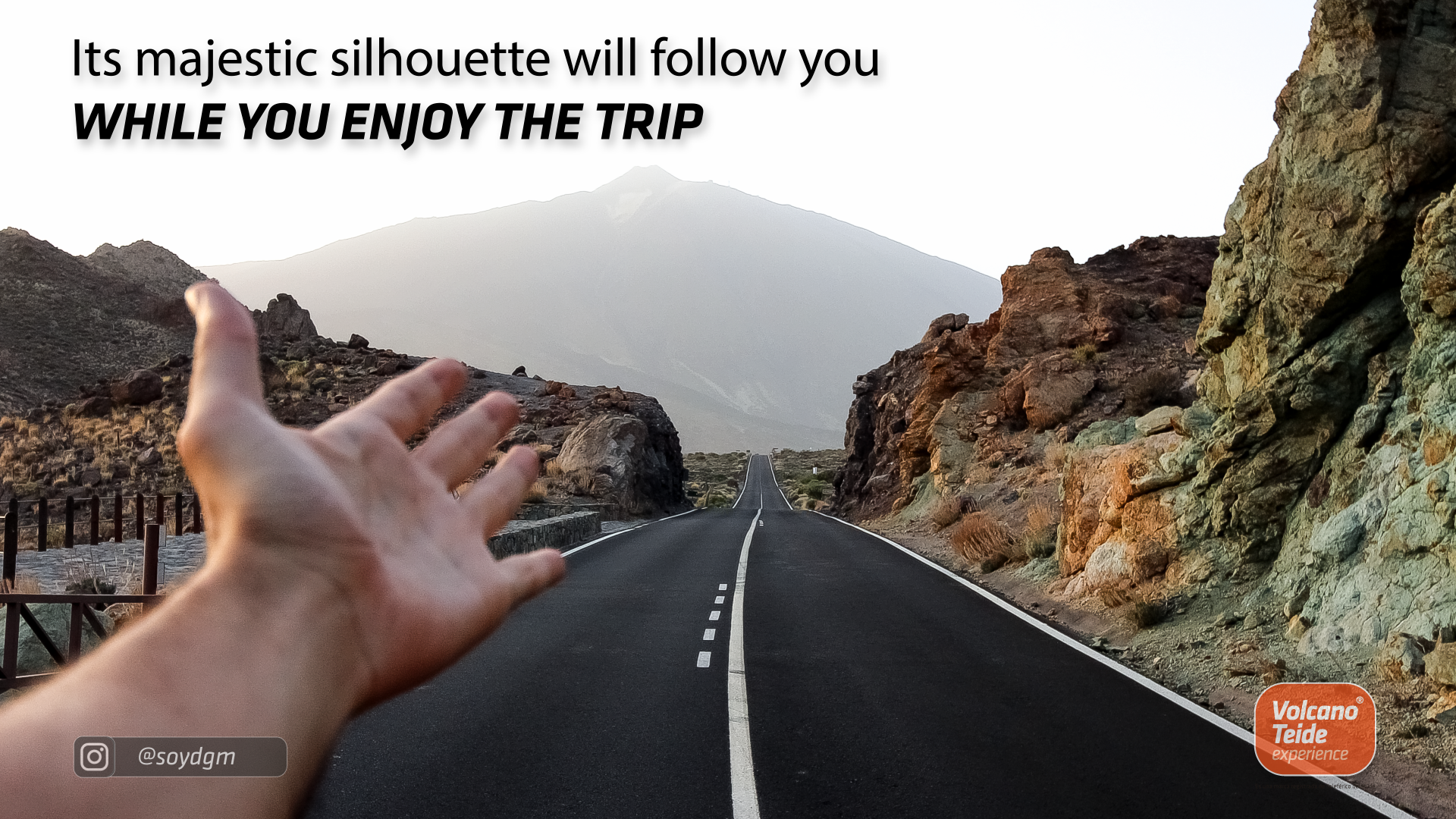
INDEX
- 1. Can I go up Mount Teide by car? When is the best time to do so?
- 2. How far up Mount Teide can you drive?
- 3. Is it possible to go up Mount Teide by car today?
- 4. The best road routes to go up Mount Teide by car
- 5. Teide Legend Tour: The best way to see Mount Teide from your car
- 6. What else is there to do if you’re going on a trip to Mount Teide by car?
- 7. Useful information for visiting Mount Teide by car
1. Can I go up Mount Teide by car? When is the best time of year to do so?
Tenerife has a wide range of different climates, known by the locals as “microclimates”, making its landscapes very diverse. You can see both the green mountains on the northern side of the island and the dry landscapes of the south.
It’s also possible to sunbathe on the beach in winter, with views of the snow-capped Teide. Isn’t that great?
As you know, Mount Teide is the biggest tourist attraction in Tenerife, so one of the best things to do is plan your road trip to the national park.
We want to help you decide which road to take to get to Mount Teide by car. Because the journey is as important as the destination. It’s all about enjoying your visit to Europe’s most visited national park from the first minute, when you sit in the car, start the engine and begin your volcanic adventure.
First of all, it is indeed possible to get to Mount Teide by car. The road that crosses the park connects the different parts of the island.
We recommend that you head to the national park using group transport, meaning that the best thing to do is to opt for a bus tour.
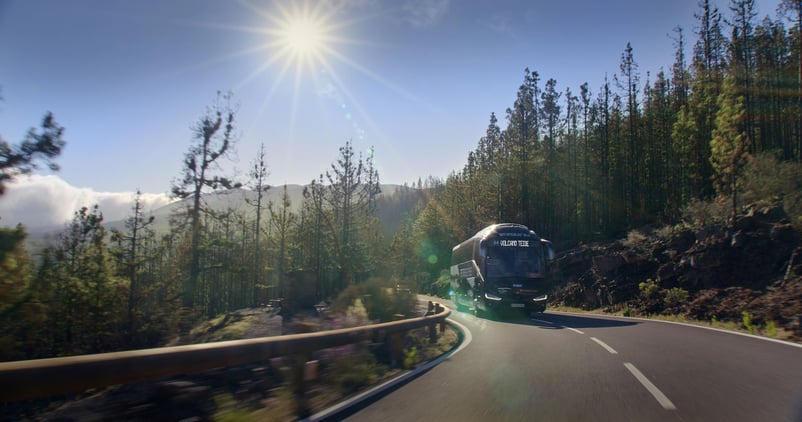
Here are a few reasons why this is best:
- Firstly, if there is less traffic in Las Cañadas del Teide, this will improve the sustainability, of a unique place in the world. This is the first thing a true fan of Mount Teide, or teidelover, would want, to preserve the national park in order for it to continue to be a global landmark for many years to come. Bear in mind that there is only one road and very few car parks. This makes it difficult to drive through. Don’t think twice and prepare your visit with the Teide Tour with Cable Car and the Teide Tour without Cable Car excursion, and an official guide who will reveal all the secrets hidden in this exceptional place.
- If, despite what we’ve suggested, you’d prefer to visit Mount Teide by car, the best time to do so is after 1.00pm, as the volume of cars and buses (known by the locals as guaguas) starts to drop after that time. This means that you will do less damage to the environment and enjoy the experience even more. The crowds increase dramatically at weekends, so try to schedule your visit for any day between Monday and Friday if you’re on holiday.

2. How far up Mount Teide can you drive?
One of the features of the Teide National Park is that the road crosses it from one side to the other. This provides easy access for thousands of people every day, as it makes it possible to reach some of the most iconic spots with ease.
However, visitors should be aware that the road does not go above an altitude of 2,356 m, i.e. where the cable car base station is located, right at the foot of the peak. So if you’ve never visited this famous volcano, keep in mind that this is the closest point to the summit that you can reach by car or bus. If you want to climb even higher, you’ll have to do so by cable car or on foot.
As for the last stretch that leads to the crater, you must apply for permission beforehand, as access is restricted in order to protect the environment.
If your intention is to climb to the summit of Mount Teide, we offer a guided tour including the permit to access the peak.

Something else you should be aware of if you are driving to Mount Teide is that parking is restricted at certain times of the day. As we’ve already mentioned, the influx of people means that the small car parks along the TF-21 tend to fill up, making it difficult to leave your car for a walk or a hike.
As for the opening hours of the car parks, for the moment they are open to the public throughout the day, except for the cable car parking area, which offers 220 parking spaces.
You can check the opening hours of this car park here. Outside these hours, only the clients participating in our night-time experiences are permitted to access the car park. The astronomical observations we offer are held in the parking area.
As for any questions you may have about going up Mount Teide by car and where to park your car, here are some helpful tips:
- Distance to the cable car. You should know that the cable car itself has a parking area, although it can sometimes get crowded due to the large number of people. There are some small areas in the surroundings where you can leave your car. However, as we’ve pointed out, they tend to be busy from early in the morning.
- Distance to the summit. If you want to go up on foot, it’s best to leave your car at the Montaña Blanca car park, located at an altitude of 2,348 metres. A path begins there, which leads to the Cable Car Upper Station, at 3,555 metres, also known as La Rambleta. There is total distance of 8.31 km and a difference in altitude of 1,188 metres to climb, which takes about five and a half hours.

3. Is it possible to go up Mount Teide by car today?
The answer to the question of whether it’s possible to go up Mount Teide by car today is yes, as access is possible at any time of the day, any day of the year. Nevertheless, there may be circumstances that prevent you from reaching the national park due to road closures.
For example, when the road surface is frozen after snowfall, which turns the volcano white and makes for an unforgettable spectacle. In other words, visitors are not allowed to go up Mount Teide by car when there is any danger to them or if it is impossible to travel on the road.
For this reason, the best thing to do is to check the status of the access points, the weather conditions and if you are able to ride the cable car, as this isn’t possible on very windy days.
To do this, all you have to do is go to the Teide Today section, where we inform you about whether the cable car is open, the Cable Car Visitors’ Centre, as well as the trails to cross in this volcanic landscape. You will also find information on the status of the access roads.
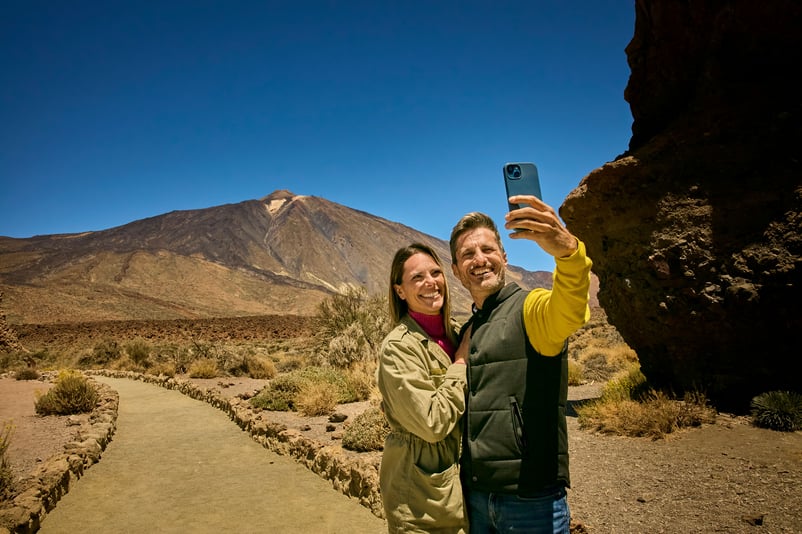
4. The best road routes to go up Mount Teide by car
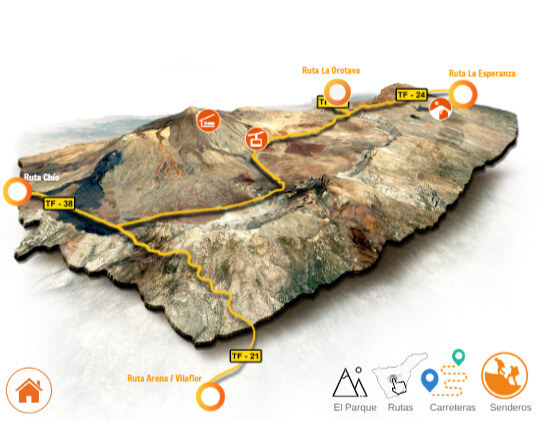
We’ve already mentioned several times that visiting Tenerife offers many advantages. You can lie on the beach relaxing under the warm rays of the sun while gazing at the ever-present peak of Mount Teide, which is sometimes covered in a white blanket of snow. Enjoying the sea and the mountains in a single panorama. Incredible!
Another big advantage of Tenerife is that travel distances are short.
In fact, the distance to Mount Teide from the main points on the island ranges from 45 km to 64 km, which means that you can drive up to Mount Teide via a road where the main access point is close to the area where you’re staying, and come back down on another road. This way you can take in completely different landscapes, returning to the starting point in the same day.
The route up to the national park is generally travelled via one of four roads that link the main urban areas, although there are others, such as the road from Candelaria that connects with the road to La Esperanza. These four roads to Mount Teide, which we will discuss in more detail later on, are as follows:
- If you stay in the Los Gigantes area, go up Mount Teide by car via Chío. It’s only a 52 km drive and along the road, you can enjoy the Chinyero volcano, responsible for Tenerife’s last volcanic eruption in 1909.
- If you stay in the Los Cristianos area, go up Mount Teide via Arona and Vilaflor. It’s only a 47 km drive and you can make an en-route stop to visit the highest town in Spain.
- If you stay in the metropolitan area of Santa Cruz and La Laguna, go up Mount Teide via La Esperanza. It is the longest route, between 55 and 64 km, but it is also the ideal itinerary to behold the phenomenon known as the sea of clouds.
- If you stay in the Puerto de la Cruz area, go up Mount Teide by car via La Orotava. It’s only a 45 km drive. You can stop off and stroll through La Orotava—a historic town straight out of another era—while learning about the 17th and 18th century Canary Island architecture.
5. Teide Legend Tour: The best way to see Mount Teide from your car
As you can see, not only are there many interesting activities to do on Mount Teide, but on the way to the summit you can also find some really impressive sights and places.
To make sure you don’t miss anything worth seeing, we’ve launched Teide Legend Tour—a digital audio guide available as an Android or iOS download that will guide you on your road trip to Teide National Park and subsequent visit to the park. You can download it to your mobile or tablet from either app store.
Its price includes a visit to the “Science and Legend” exhibition located in the Cable Car Visitors’ Centre for the booking holder and all those accompanying them.
To touch further on Teide Legend Tour, we should tell you that it is one of our suggestions for discovering Spain’s most famous volcano through some of the main characters from Guanche legends linked to the Canary Islands.
Along the different car routes that leave from the main urban areas, characters such as Guayota, Achamán and Magec will guide you through the different landscapes and cultural sites, so that you can make the most of the journey to the national park.

Therefore, if you want to know the best route to climb Mount Teide, download the app and discover interesting facts, such as where the best viewpoints and walking trails are, the most important tourist attractions, Teide National Park’s geology, history and volcanology, etc.
And, of course, visit the “Science and Legend” exhibition full of interesting scientific and mythological details about the “Legend of Guayota”, the ancient demon who lived inside Mount Teide.
The app contains audio files that will help you better understand what you’re seeing at the Cable Car Visitors’ Centre, where you will also find an official souvenir shop and Spain’s highest café-restaurant, which boasts fabulous views of the National Park and offers dishes with a flavour of the Canary Islands.
To find out more about the Teide Legend Tour, don’t miss this video.
If you’re travelling to Mount Teide with your own car, the Teide Legend Tour will make your experience an unforgettable memory.
6. What else is there to do if you’re going on a trip to Mount Teide by car?
It’s very likely that with everything we’ve already told you, you’re looking forward to booking a bus trip to visit the Teide National Park or driving along one of the roads that lead to this wonder of nature. Let’s take a look at some of the activities you can do if you’re going to see Mount Teide by car.
Take in the views from Mount Teide and the viewpoints you will find on your way there
One of the great attractions of the roads to Mount Teide is undoubtedly the viewpoints that have been provided for you to admire the best views. Bear in mind that most of the time you’ll be travelling from sea level to over 2,000 metres in altitude, meaning that you’ll come across breathtaking panoramic views along the way.
- From Puerto de la Cruz.
La Orotava. The first municipality you’ll come across on the ascent to Mount Teide from Puerto de la Cruz is one of the most significant in Tenerife’s history. La Orotava is undoubtedly worth a thorough visit in which to see all its heritage.
Aguamansa. Aguamansa is another outstanding town, whose springs were responsible for moving the mills of La Orotava.
La Bermeja viewpoint. On the ascent through the La Orotava Valley, a place you must stop is the La Bermeja viewpoint, from where you can behold a magnificent view of the northern part of Tenerife.
El Portillo. Lastly, we highly recommend a stop at the entrance to Las Cañadas, where there’s also an interpretation centre and a botanical garden.
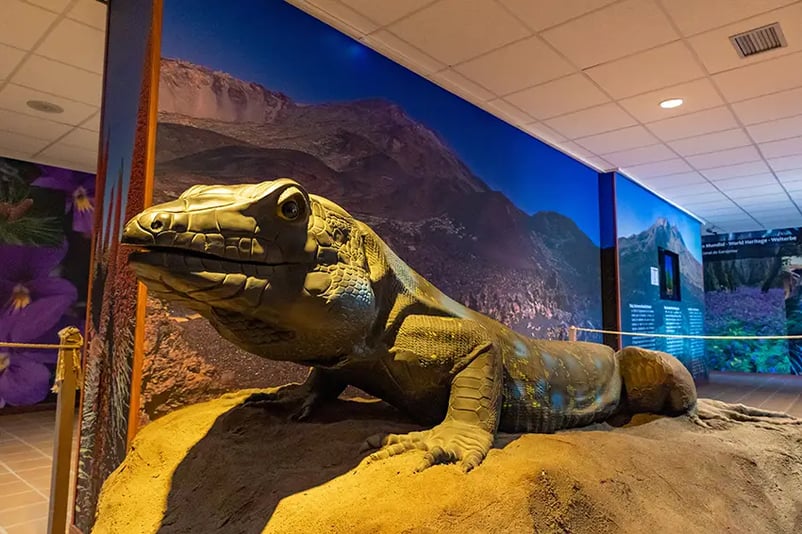
- From Las Américas.
Arona. The climb from Las Américas is less wooded than those to the north, but this makes it no less interesting. A good example is Arona, a town that managed to flourish in a dry area and which is home to the iconic Mount Atlas mastic trees.
Spain’s highest vineyards. Following the TF-51 road, you can not only see pointed mountains that were the vents of ancient volcanoes, but also the highest vineyards in Spain, from which Trevejos wines come from.
Vilaflor. Another key stop is the beautiful village of Vilaflor, where you can visit the Church of San Pedro Apóstol or the Mill of Vilaflor.
Ucanca plain. Once in the national park, you’ll enter a lava field that stretches out at the foot of the ruins of a volcano that has long since disappeared.
- From Los Gigantes.
Chinyero volcano. On this climb through Chío, the Chinyero volcano stands out above all, which erupted in 1909 and is the last one to have erupted on the island. From there, the route is similar to the one from Las Américas. In fact, there’s a point where the two roads meet.
- From La Laguna / Santa Cruz.
La Esperanza. Known as the climb up La Esperanza, this is the longest route to Mount Teide and for many the most stunning because there are many viewpoints to the Teide if you go by car.
Chipeque viewpoint. There are other worthwhile viewpoints before this one, but in this case it stands out because it is the best place to observe the La Orotava Valley and the sea of clouds. In addition, the outline of La Palma can often be seen in the distance.
La Tarta viewpoint. In addition to the wonderful views it offers, take a look here how the road runs between two rock faces clearly showing the different layers of the terrain.
Teide Astronomical Observatory. Before reaching Las Cañadas, you will see the group of white buildings that make up this observatory on the left side of the road, which you can also visit on our Astronomic Tour.
One last recommendation, whichever way you head up, is to follow two trails near the base station, such as the one that leads to the famous Roques de García and the one that runs along Montaña Majúa.
Discover the eruption of Mount Teide and the history of the area in a unique exhibition
Scientists have calculated that the formation of Mount Teide began 170,000 years ago, after a giant landslide involving the former volcanic edifice.
So when you visit, you’ll be in a place that has undergone quite a few changes over the centuries.
You can find out about all this through the “Science and Legend” exhibition, in which scientific insights meet mythology in a retelling of the last great eruption of Mount Teide, which took place approximately 1,000 years ago. As we’ve already mentioned, this exhibition is included in the Teide Legend Tour and you can visit it even if the cable car is closed.

Take home a souvenir of Mount Teide from the souvenir shop
If you want to commemorate your visit to this iconic natural setting, what could be better than a souvenir from the official souvenir shop in the Cable Car Visitors’ Centre?
As well as stocking many local products, there you can get your hands on the comic book created to learn more about the history of Mount Teide and the mythology that surrounds it, featuring Achamán and Guayota.

The Volcano Teide Legend comic tells the Legend of Guayota with superb pictures.
Eating at the Teide’s restaurant, the highest one in Spain
Another of the experiences you can try when you go up Mount Teide by car or bus is to taste the food at the Teleférico del Teide Restaurant, which not only uses local produce, but also serves as a cafeteria.
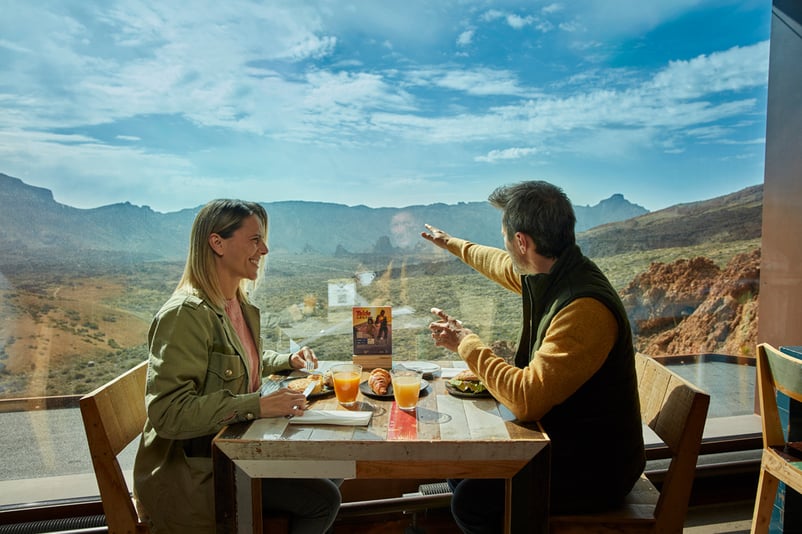
In the Cable Car Visitors’ Centre café-restaurant you can have a snack while you admire the spectacular views it boasts of the national park.
As if that were not enough, its large windows make it an exceptional viewpoint to gaze at Las Cañadas del Teide while you savour the best products the islands have to offer.
Don’t hesitate to book a table at the highest restaurant in Spain!
Riding the Teide Cable Car
It goes without saying that if you go to the national park, the best option is to ride the Teide Cable Car, and for this you can opt for any of the available Teide Volcano activities without transport.
Remember that if you want your visit to Teide to be sustainable, the best thing to do is to book an excursion with transport included, such as the Teide Tour or the excursion Ascent to the Peak of Teide.

Observing the sky at day and night from Mount Teide
Finally, we have to mention something magnificent that you might not think of when you visit the Las Cañadas del Teide National Park: its sky. Both at night and during the day, you can visit the Observatory on the way up via La Esperanza.

What is there to say about a starry night when the sun goes down? That is when all the beauty of the stars is laid out in front of us, leaving us spellbound by such a spectacle. To help you enjoy it as much as possible, we recommend the Mount Teide Night Tour and the Astronomic Tour we already mentioned, which includes the two previous activities: a visit to the Observatory and an astronomical observation.
Useful information for visiting Mount Teide by car
If you want to make sure you don’t miss anything on your trip to Mount Teide by car, here are some links with all the information you need to prepare for your journey:
All about the Teide Visitors’ Centre
Visiting Mount Teide when the cable car is closed
What to see in the Teide National Park: places and experiences not to be missed
Complete your visit to Mount Teide with the Teide Legend Exhibition

